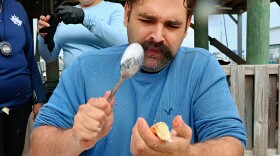The new school year is underway and so are new federal guidelines to curb the spread of COVID-19.
The Centers for Disease Control and Prevention released updated recommendations on Thursday, largely loosening virus protocols and leaving much of the decision-making to individuals and local officials.
The changes to the existing guidance are a reflection of the country's sweeping immunity. Around 95% of the population have some immunity due to a combination of vaccination and past infections, according to Greta Massetti, a senior epidemiologist at the CDC.
"We also have a better understanding of how to protect people from being exposed to the virus," Massetti said in a statement. "This guidance acknowledges that the pandemic is not over, but also helps us move to a point where COVID-19 no longer severely disrupts our daily lives."
Health measures will probably look different depending on the school district, but here are some things to know about best practices recommended by the CDC.
Universal indoor masking is recommended in nearly half the country
The CDC calls on students and staff members to wear "well-fitting" masks at school if they live in communities where COVID-19 community transmission levels are high. As of Thursday, that accounts for nearly 40% of counties in the U.S., including Los Angeles, Nashville and most of Florida.
In general, students who are sick from or exposed to the virus should wear face coverings for 10 days, regardless of whether they have been vaccinated or previously infected. The latest guidance also advise people to put on a mask while in the school nurse's office or other health care settings.
The CDC asked school administrators to ensure that masking polices accommodate students with disabilities or those who are immunocompromised.
"Students with immunocompromising conditions or other conditions or disabilities that increase risk for getting very sick with COVID-19 should not be placed into separate classrooms or otherwise segregated from other students," the agency said.
Routine testing is no longer recommended, with some exceptions
The agency no longer recommends routine testing in K-12 schools unless COVID-19 community transmission levels are high in the area.
If that's the case, school administrators should consider implementing health screens for "high-risk activities" like close-contact sports, band and theater. Large events like prom, tournaments and field trips should also incorporate testing or possibly be rescheduled if infection rates become concerning. The same rules apply for the first day back after the holidays and other vacation breaks, according to the CDC.
When it comes to testing, the new guidelines also make no distinction between vaccinated or unvaccinated people — which is a sharp difference from previous rules.
Quarantine requirements are dropped
Similar to routine testing, the CDC is no longer advising students or staff members who are exposed to the virus to quarantine. Instead, the agency's new advice is that people who were exposed wear face coverings for 10 days and get tested.
Because of the testing and quarantine policy changes, the CDC says that "test-to-stay" programs, which required exposed unvaccinated students to get tested frequently in order to attend school, are no longer necessary.
That being said, the agency urges schools to allow for "flexible, non-punitive and supportive" paid sick leave policies as well as allow for excused absences when students are sick.
"Avoid policies that incentivize coming to school while sick, and support children who are learning at home if they are sick," the new guidelines say.
What to do if you or your student is sick
Students and staff members who experience symptoms like a cough, fever or sore throat should head home and get tested immediately, the CDC said. For people who are at risk of getting severely ill from COVID-19, the agency recommends consulting their doctor.
Those who test positive should isolate at home for at least five days. Afterward, isolation depends on whether they continue to exhibit symptoms or test positive for the virus.
Students and staff members sick with the virus don't have to get a negative test result to end isolation, but it could shorten the number of days they should wear a mask after getting sick.
But generally, the CDC recommends students and staff continue wearing a mask for 10 days after symptoms began to show.
Copyright 2022 NPR. To see more, visit https://www.npr.org.









